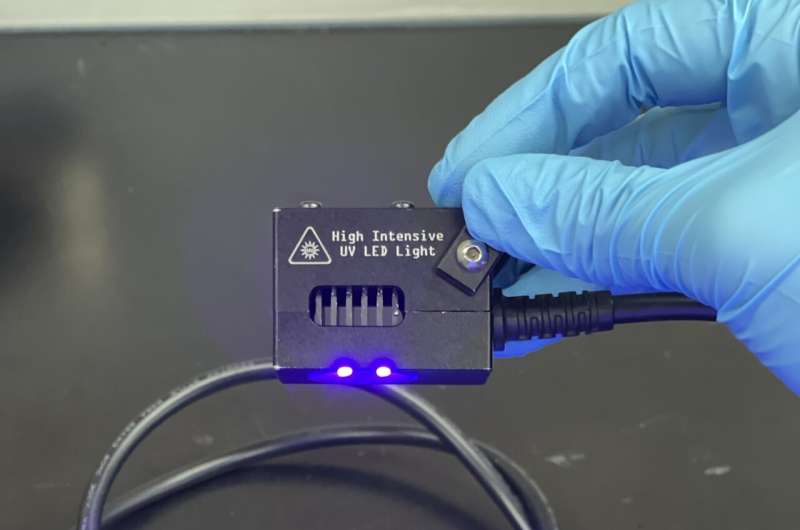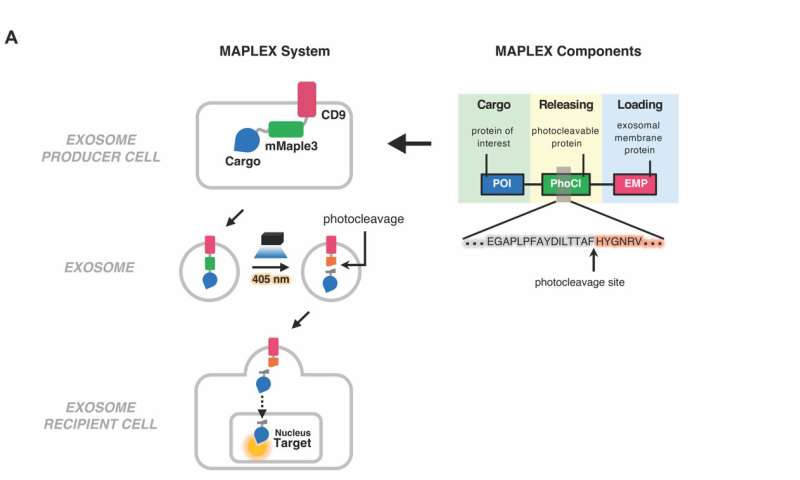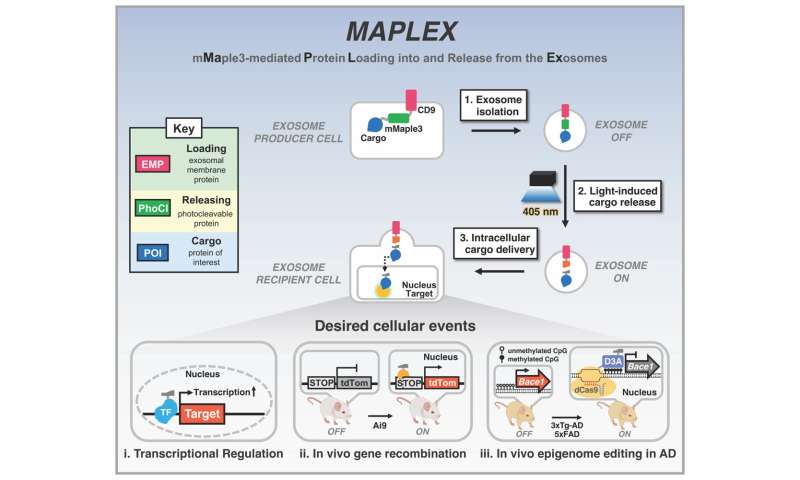August 8, 2024 report
This article has been reviewed according to Science X's editorial process and policies. Editors have highlighted the following attributes while ensuring the content's credibility:
fact-checked
peer-reviewed publication
trusted source
proofread
MAPLEX exosome-based delivery system carries therapeutic proteins into cells

A multi-institutional team of biochemical engineers has developed an exosome-based delivery system that can carry beneficial proteins into cells to allow new kinds of medical treatments. Their paper is published in the journal Science Translational Medicine.
Prior research has shown that some illnesses could be better treated by delivering specific proteins into desired cells—placing a ribonucleoprotein complex into nerve cells, for example, to treat Alzheimer's disease. To date, such efforts have failed.
For this new study, the team in Korea developed a delivery system that overcomes problems that have stymied other attempts, possibly allowing for new ways to treat a variety of diseases.
To develop their system, the researchers started with exosomes, vesicles that cells use to send proteins to other cells. They engineered them in a way that allowed them to carry cargo proteins fused with mMaple3, a photocleavable protein. This was then fused with marker proteins naturally present in the exosome.
The design led to overexpression of the cargo as it made its journey to the target cell and subsequent buildup inside the exosome. Exposing the cargo to light once it reached its destination cleaved the mMaple3, allowing the cargo to escape into the cell. The researchers call their system MAPLEX.
-

Schematic design of MAPLEX system. MAPLEX system consists of three components: cargo protein, photocleavable protein (PhoCl), and exosomal membrane protein (EMP). mMaple3 was used as a PhoCl, and CD9 was used as an EMP. Credit: Jihoon Han -

Schematic illustration of MAPLEX system and its applications. The MAPLEX system consists of three components: cargo protein, photocleavable protein (PhoCl), and exosomal membrane protein (EMP). The EMP allows the loading of the cargo protein into the exosome, and the PhoCl allows the release of cargo protein from the exosomal membrane upon exposure to 405-nm light. In this study, the MAPLEX system was used to induce cellular events including transcription regulation in BJ fibroblasts, gene recombination in Cre reporter mice, and epigenome editing in mouse models of Alzheimer’s disease. Credit: Jihoon Han
The research team tested their system by developing a nasal spray to introduce the MAPLEX delivery system into the brains of Alzheimer's mouse models. In the test case, the cargo was a dCas9 ribonucleoprotein complex, which made its way to target brain cells. Release of the cargo resulted in reduction of amyloid-β proteins and improvements in memory and cognition.
The researchers suggest that their delivery system could be used as a treatment option for a wide variety of patients who could benefit from protein delivery into impacted cells—most specifically, those that are based on CRISPR epigenome editing or those that involve deficiencies of specific proteins or enzymes.
More information: Jihoon Han et al, Engineered exosomes with a photoinducible protein delivery system enable CRISPR-Cas–based epigenome editing in Alzheimer's disease, Science Translational Medicine (2024). DOI: 10.1126/scitranslmed.adi4830
© 2024 Science X Network




















